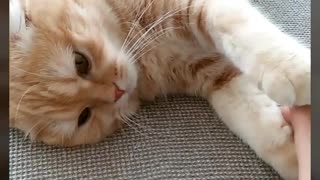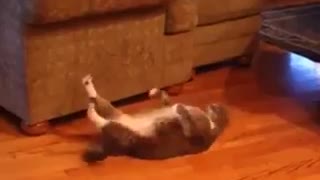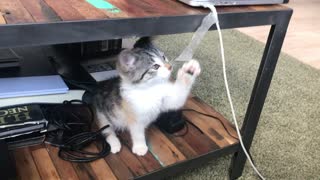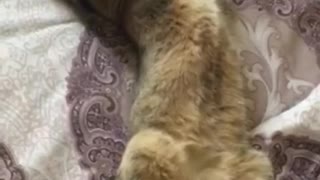Cat exercise
Cats are known for their independent nature, but regular exercise is important to keep them healthy, mentally stimulated, and prevent obesity. Here are some tips for exercising your cat:
Play with interactive toys: Cats love toys that mimic prey, such as wand toys with feathers or strings. Engage your cat in interactive play sessions by moving the toy around and encouraging them to chase and pounce on it. This type of play can help satisfy their hunting instincts.
Laser pointers: Using a laser pointer can be a great way to get your cat moving. Cats love to chase the elusive red dot, but make sure to never shine the laser directly in their eyes. Always end the play session with a physical toy or treat to allow your cat to "catch" something.
Cat trees and climbing posts: Providing vertical spaces like cat trees or climbing posts can encourage exercise and allow your cat to engage in natural behaviors like climbing, scratching, and jumping. These structures provide mental stimulation and exercise as cats explore different levels and surfaces.
Catnip or treat puzzles: Introducing puzzle toys that dispense treats or catnip can keep your cat mentally engaged and physically active. These toys require your cat to figure out how to access the reward, encouraging problem-solving skills and physical activity.
Set up an indoor obstacle course: Create an indoor obstacle course using boxes, tunnels, and different surfaces for your cat to explore and navigate. This can be a fun and stimulating way to encourage exercise while keeping them entertained.
Controlled outdoor access: If you have a secure outdoor space, you can consider allowing your cat supervised access. This could be through a cat enclosure or a securely fenced yard. Always prioritize your cat's safety by ensuring they cannot escape or come into contact with potential hazards or other animals.
Remember to start slowly and gradually increase the intensity and duration of the exercise sessions. Each cat has its own preferences and energy levels, so observe what activities your cat enjoys the most and tailor the exercise routine accordingly. Additionally, it's important to consult with your veterinarian about your cat's exercise needs and any specific considerations based on their age, breed, and health condition
-
 0:28
0:28
steveo1975
2 years ago $0.01 earnedCat exercise routine
94 -
 0:32
0:32
20160121kinako
6 years agoThe workout cat
3 -
 0:28
0:28
BeachRipper
10 months agoDoes This Cat Even Workout
7 -
 0:15
0:15
Catttt
7 years agocat who loves to exercise
26 -
 0:39
0:39
Catttt
7 years ago $0.54 earnedREAL cat, time to exercise
153 -
 0:20
0:20
pops3878
3 years agoPet doing exercise
511 -
 2:17
2:17
RoseAnimals
2 years agoCat Training
4 -
 0:29
0:29
DDOI
1 year agoHow to give your Cat a good workout
12 -
 0:18
0:18
juice17
3 years agoCat workout
46 -
 0:40
0:40
Funnycatvideo
5 years ago $0.16 earnedCat Stretching Her Body
339